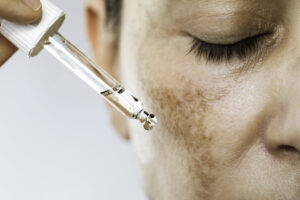Dealing With Discoloration

Skin is the largest organ in our body, and it protects us from different elements. However, our skin is also prone to various issues, and one of those is discoloration. Skin discoloration is a common problem that can affect anyone, regardless of age and gender. Sometimes, an uneven skin tone can lead to low self-esteem, and it can negatively impact our confidence. The good news is that there are various treatments available for skin discoloration. In this blog post, we’ll discuss the causes, types, and treatments for skin discoloration so you can have a better understanding of it.
What Causes Skin Discoloration?
Various factors can lead to skin discoloration, including genetics, hormones, sun exposure, aging, and illness. Some people are born with certain skin conditions that cause discoloration, such as albinism or vitiligo. In other cases, skin discoloration can be caused by sun damage, which can lead to hyperpigmentation, or dark patches on the skin. Additionally, hormonal changes, such as pregnancy or menopause, can cause skin discoloration. Some medications and illnesses can also cause discoloration, such as Addison’s disease.
What Are the Different Types of Skin Discoloration?
There are different types of skin discoloration, which can affect different parts of the body. The most common types of skin discoloration include hyperpigmentation, hypopigmentation, and erythema. Hyperpigmentation is the darkening of the skin, which can be caused by excess melanin production. Common types of hyperpigmentation are age spots, melasma, and post-inflammatory hyperpigmentation. In contrast, hypopigmentation is the lightening of the skin, which can be caused by the loss of melanin. Examples of hypopigmentation are vitiligo and albinism. Finally, erythema is the reddening of the skin, which can be caused by inflammation, infection, or sun exposure.
How Can Skin Discoloration Be Treated?
There are different treatments available for skin discoloration, depending on the type and severity of the condition. Topical treatments, such as skin lightening creams, can help reduce hyperpigmentation and even out skin tone. For severe cases, chemical peels, laser therapy, or microdermabrasion can be used to remove the damaged skin cells and promote new cell growth. Additionally, if skin discoloration is caused by an underlying medical condition, treating the condition itself can help improve the skin.
Treatment for Skin Discoloration
Swinyer-Woseth Dermatology offers various treatments for skin discoloration, depending on the patient’s unique situation. Their team of experts can evaluate your skin and recommend the most appropriate treatment for you, such as topical treatments, chemical peels, laser therapy, or microdermabrasion. They can also determine if skin discoloration is caused by an underlying medical condition and work with you to treat the condition itself.
What Are the Signs of Skin Cancer and When Should You Be Concerned?
Skin cancer is a serious condition that can be fatal if not detected early. It’s essential to know the signs of skin cancer and when you should be concerned. Skin cancer can appear as moles or spots on the skin that are asymmetrical, have irregular borders, are different colors, or have a diameter larger than an eraser on a pencil. Additionally, skin cancer can cause discoloration or changes in the texture of the skin. If you notice any unusual skin changes or discoloration, schedule a consultation with Swinyer-Woseth Dermatology as soon as possible.
Book an Appointment with Swinyer Woseth Dermatology
Skin discoloration can be a frustrating and sometimes embarrassing issue, but it’s treatable. By understanding the causes and types of skin discoloration, you can work with Swinyer-Woseth Dermatology to find the right treatment for you. If you notice any unusual skin changes or discoloration, don’t hesitate to schedule a consultation with Swinyer-Woseth Dermatology. We can evaluate your skin and recommend the most appropriate treatment for you, helping you improve your skin’s appearance and boost your confidence. Contact us today!
